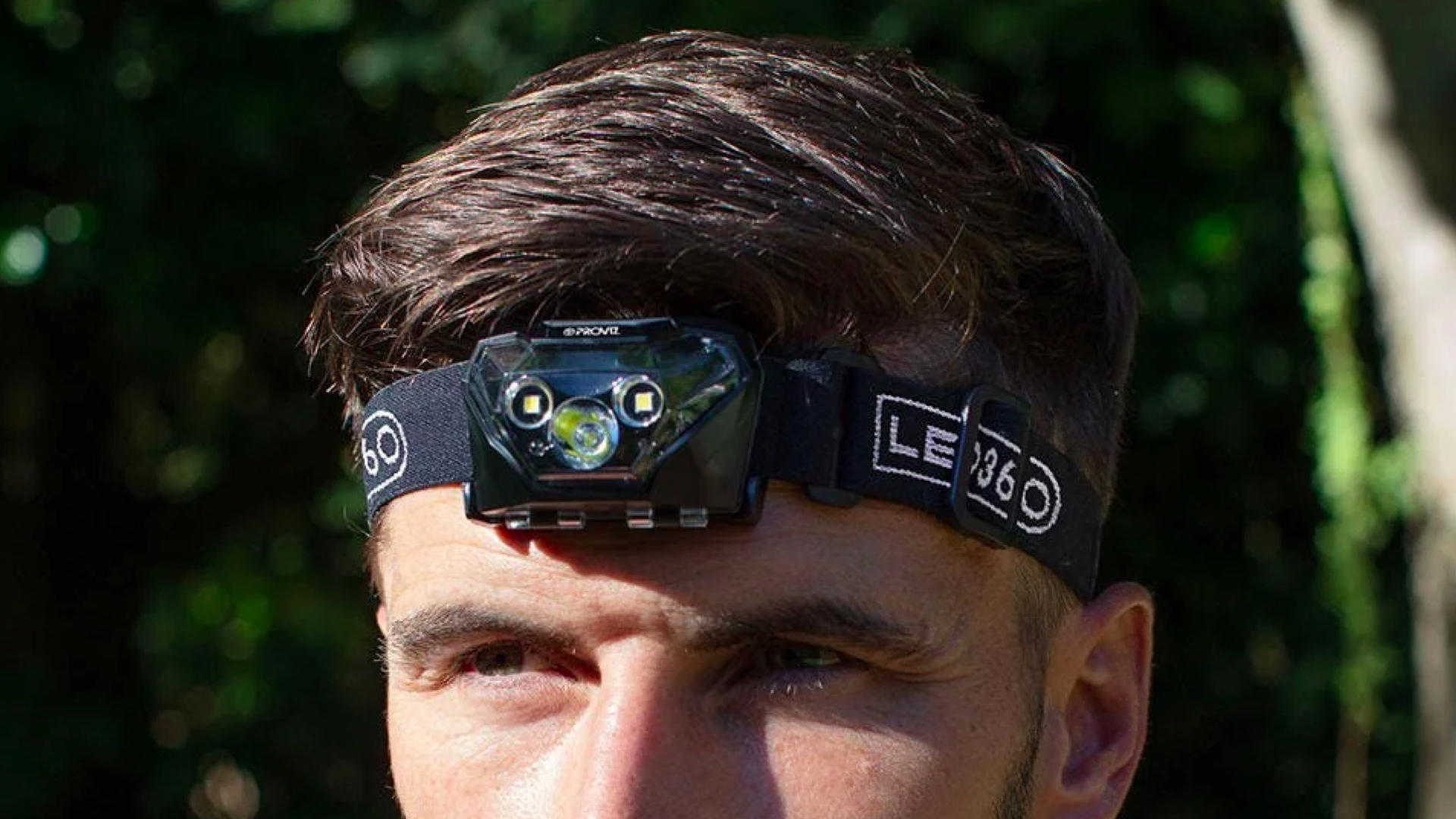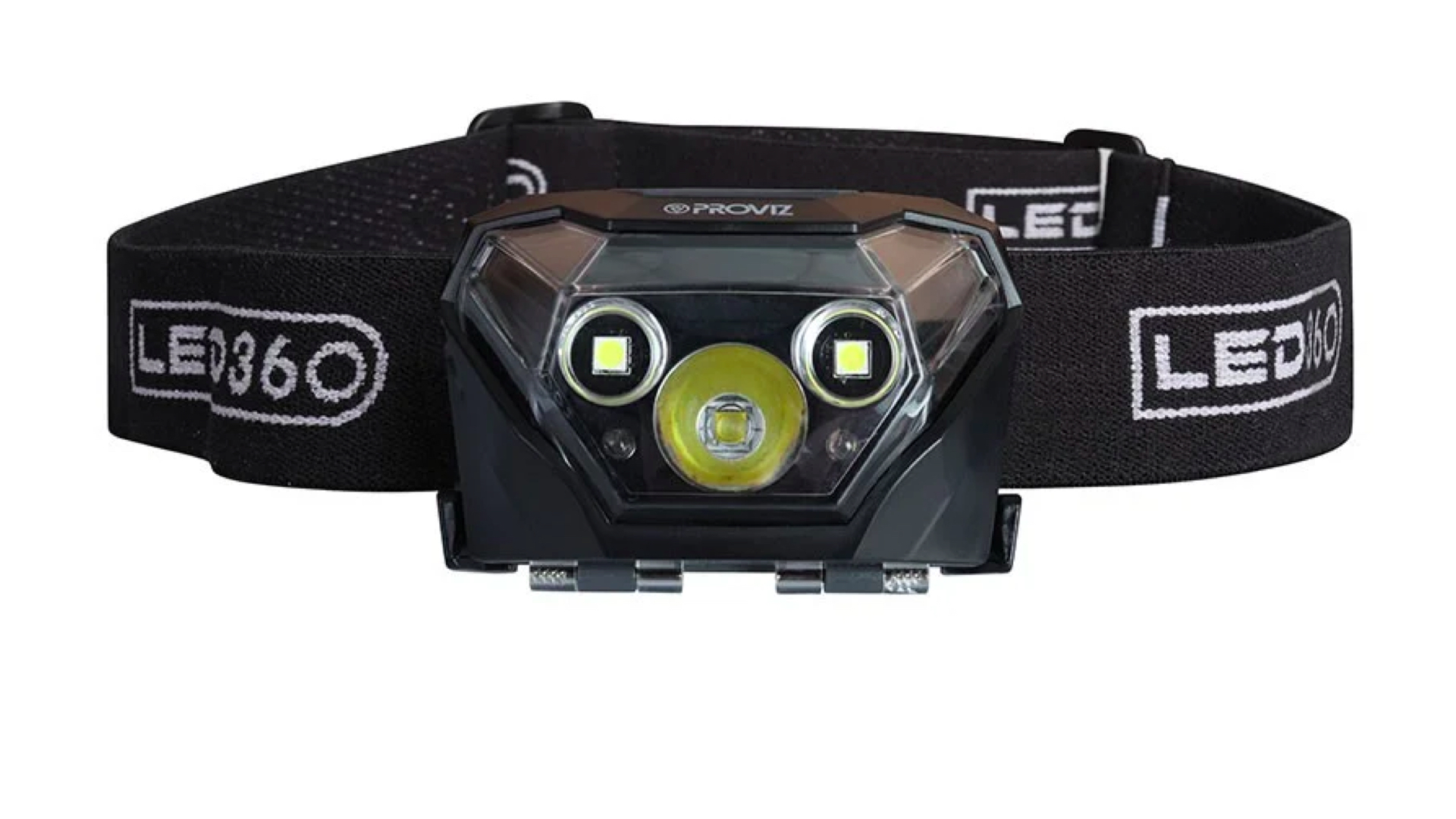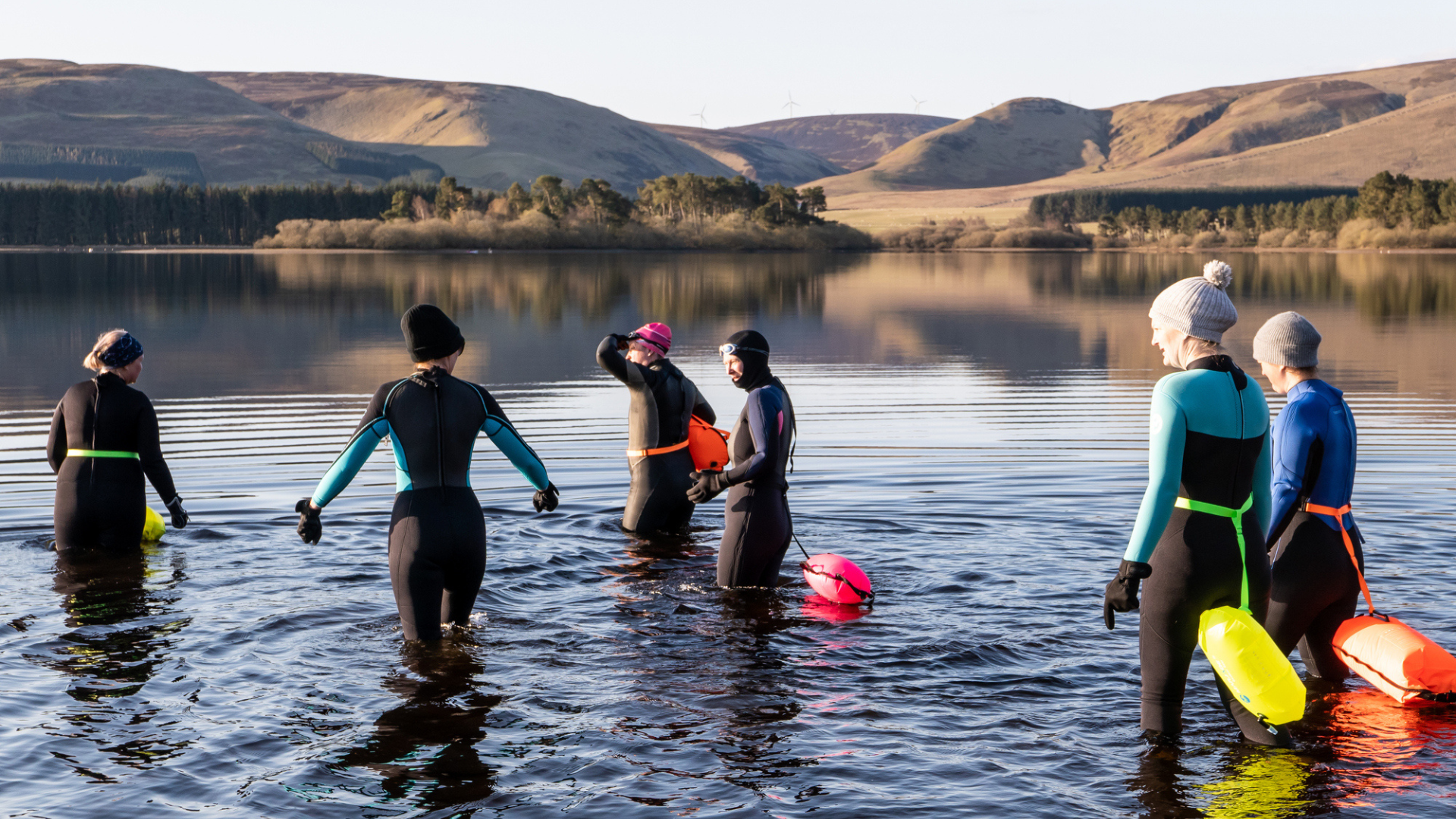Advnture Verdict
Inexpensive, bright and comfy, just take a spare set of 3 x AAA’s with you once you’ve used it for a fair few hours.
Pros
- +
Light
- +
Comfy on head
- +
Inexpensive
- +
Bright enough for running
Cons
- -
Less water resistant - only splashproof
- -
No red light at rear
- -
Only takes 3 x AAAs
- -
500 lumens for 20 hours is misleading
You can trust Advnture
Proviz LED 360 Antares: first impressions
If you need a running headlamp but you don’t have much cash to splash, consider the Proviz LED 360 Antares. It’s nice and bright at 500 lumens (when the 3 x AAA batteries are new), the headband is very easy to adjust, and it sits very comfortably on your head. The button is large and easy to press, giving you access to a max spot beam, a high flood beam, a low flood beam, a red beam and a flashing mode.
Beware the large figures for burn time, however. As this torch only uses three x AAA batteries, the light output drops off gradually over time, so you don’t get 500 lumens on that highest setting the whole time, especially not towards the end of the battery life. In contrast, a rechargeable lithium battery (as used by some of the other best headlamps we tested) will kick out the same level of brightness until its very limit, at which point it will either conk out altogether or (as with the high-quality brands) fall back to a safety reserve mode lower-light setting that usually lasts a few hours. As long as you’re OK with that, this is a fantastic piece of kit for a great price.
• RRP: $70 (US) / £40 (UK)
• Weight (incl. battery): 98g / 3.45oz
• Max light output: 500 lumens
• Average run time: (Low) 73 hours / (High) 20 hours
• Max beam distance: 100m / 328ft
• Water resistance: IPX2 (Splash proof)
Proviz LED 360 Antares: on the trails

This is a nice headlamp, super simple, inexpensive and we enjoyed using it, especially through the muddy fields of the East Midlands.
During the test period we definitely noticed that, after roughly five hours use, the light level on max had faded noticeably from the 500 lumens stated. This is the difference between using rechargeable lithium batteries and triple As mentioned above, and will affect all headlamps with traditional battery setups similarly. But it is worth mentioning as you might want to take a spare set of batteries with you should you notice max power isn’t performing for as long as the stats stated when out and about.
The different light settings are pitched nicely, and the flashing mode and red light are also useful touches.
At IPX2 it’s not as waterproof as some others in the test (the IPX ratings run from 0, which means giving no protection, to 8, which means submersible) but should be OK for sweat and light drizzle. If you want a nice, simple head torch that won’t break the bank and gives a nice, wide, bright, white beam for a two-to-three hours of road and trail running or hiking, this is an option for you.
The co-founder and former editor of Trail Running magazine, Claire now runs the YouTube channel Wild Ginger Running, creating films about trail- and ultra-running advice, inspiration, races and gear reviews. An award-winning journalist, writing for outdoor and adventure sports magazines and websites, Claire's first book, The Ultimate Trail Running Handbook (5k to 50k), is out now. Her second, The Ultimate Ultra Running Handbook (50k to 100 miles), is out Autumn 2024. Claire also speaks and presents at events and races.


